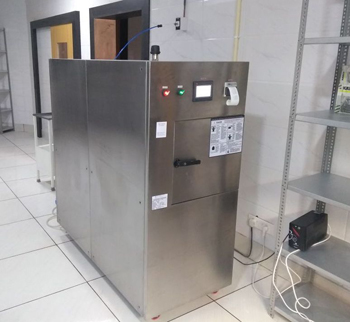The EO Sterilizer Global Demand forecasts the market for this sterilizer to grow at a CAGR of nearly 22% over the next six years. The article includes a detailed analysis of the market from different perspectives, including type, application, and geography. It provides invaluable information about recent market developments and their application.
EO Sterilization is Compatible with a Wide Range of Medical Device Materials
Ethylene oxide (EO) sterilization is the most common industrial sterilization process for medical devices. This method is relatively cold and is compatible with most medical device materials. It is particularly effective at killing bacteria, viruses, molds, yeasts, and insects. However, it is important to consider the limitations of this process before using it. Listed below are the benefits and limitations of ETO sterilization.
ETO sterilization has many benefits. It is compatible with a wide variety of materials, including polymers and silicone. Additionally, it can reduce the risk of a device malfunctioning or developing an infection. FDA regulation also requires manufacturers to maintain proper quality systems and maintain quality controls for medical devices. This applies to contract sterilization companies as well. In addition to FDA requirements, EtO sterilization requires compliance with voluntary consensus standards. Manufacturers using EtO sterilization must comply with a number of requirements outlined by ISO 11135:2014.
EO Sterilization is a Low-Temperature Gaseous Process
EO sterilization is a low-temperature, gaseous process that requires specific know-how to ensure safe, effective sterilization. This gas is compatible with most thermosensitive materials, but some may be sensitive to high temperatures, humidity or EO gas concentration. However, EO is a gentle solvent that is not harmful to most polymers. The process can be done with high concentrations of ethylene oxide or low concentrations, which are safer. However, EO can accumulate residuals.
Although EO is a safe sterilant, the gas itself is highly toxic and carcinogenic. This means that operators must take precautions to minimize exposure. Sparking equipment, flammable materials and EO chambers must be properly protected. When EO sterilization is not fully aerated, workers must wear respirators.

EO Sterilization is Compatible with Nearly Every Polymer
EO sterilization is generally compatible with almost every polymer, although sterility-related issues can limit the process. Polymer absorptivity is dependent on humidity, temperature, and aeration, and may not be suitable for some hydrophilic coatings. For this reason, users must be careful about EO sterilization.
EO is highly compatible with many materials, including medical devices. Because it does not involve excessive heat or moisture, it is an excellent option for sterilizing a wide range of materials. The process can be used to sterilize materials such as medical devices and other polymeric components. Depending on the material, the process can also be performed on the final packaging. As EO sterilization permeates sealed packaging, it can also be used to sterilise polymeric components commonly found in medical devices.
EO Sterilization is a Key Component of The Healthcare Industry Supply Chain
EO has been used as a sterilant in the healthcare industry for nearly a century. Currently, about 50% of the products in the U.S. are sterilized with EO. EO is the least toxic method of sterilization, and it does not pose potential health risks for nearby residents and workers.
EO is commonly used for the sterilization of medical devices, but many device manufacturers and contract sterilizers are developing alternative sterilization processes.
The use of EO sterilizers is growing as a preferred alternative for many medical devices, especially when sterility is of the utmost importance. It has a broad operating range. The choice of EO concentration should be based on the specific product load and the sterility assurance level.
The Bottom Line The EO Sterilizer is a growing industry, with nearly 50% of the industrial terminal sterilization market. The process is straightforward conceptually, requiring a fully functional finished good device to be placed into a high-quality, breathable packaging system. This seal, which allows ingress and egress of both humidity and EO, is microbial-resistant. The product is then palletized in well-defined configurations, and the sterile load is then placed into the EO chamber. Because humidity must be controlled to ensure a complete microbial kill, the product may be pre-humidified prior to entering the EO chamber. Dynamic humidity pulsing is also a common technique.





